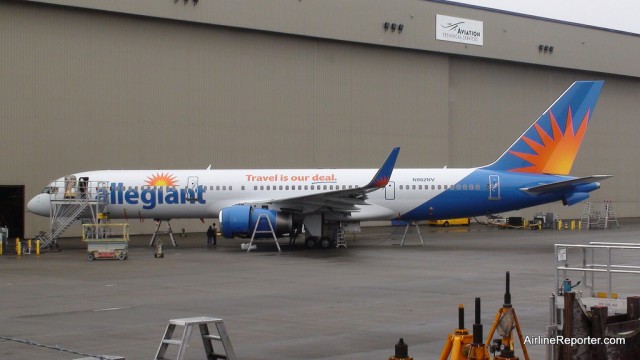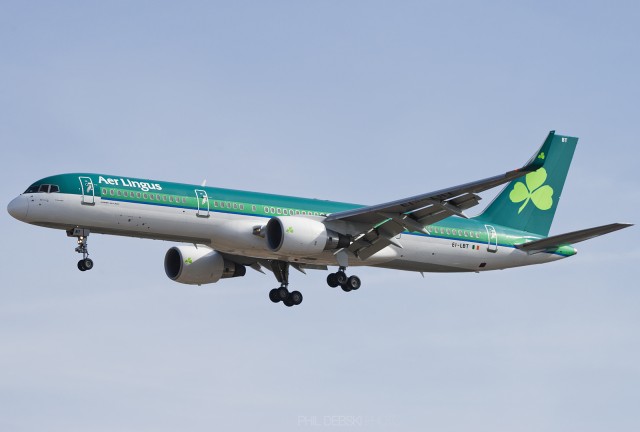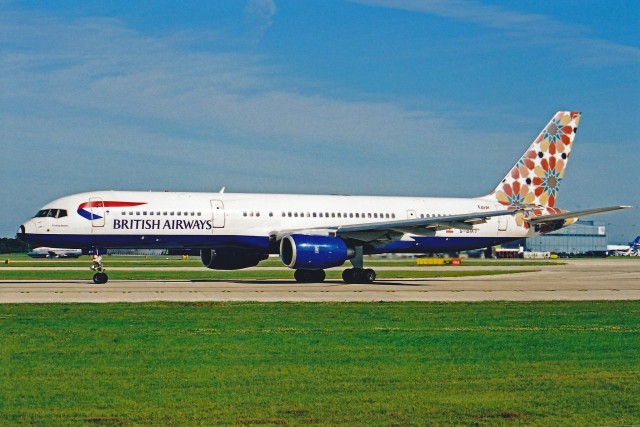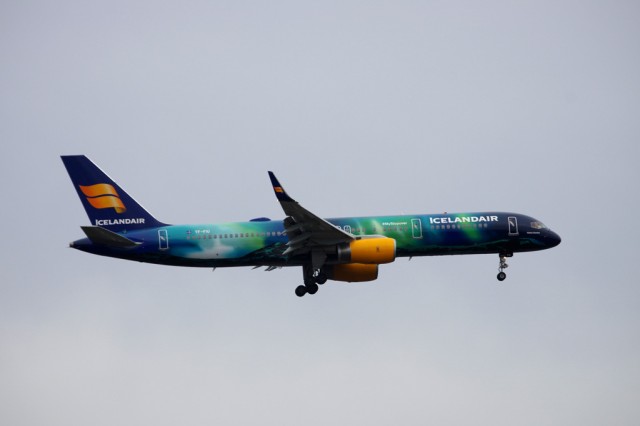
Icelandair use 757s to connect their hub in Reykjavik to European and North American destinations – Photo: Mal Muir | AirlineReporter
What has been the most talked about aircraft as of late in aviation circles? I would have to say it is the Boeing 757 — an aircraft that seems irreplaceable. This aircraft is beloved by some, hated by others, and yet so many people have flown them, no matter where you are from (unless you are Australian, then it’s going to be rare). I can remember the first time I saw a 757 (Royal New Zealand Air Force at Avalon Airshow); I can also remember my first flight on a 757 (United P.S from JFK to LAX). I’ve got so many wonderful memories of the 757 that I wanted to take a little trip down memory lane and bring you all along with me.
The Boeing 757 was the last clean-sheet narrow-body aircraft to come out of the Seattle area. The aircraft was produced in Renton and, much like myself, the 757 was an 80’s baby. Rolled out on January 13, 1982, it took flight just over a month later on February 19th. Deliveries of the 757-200 began in December 1982, less than a year after roll-out, with the launch customer being Eastern Air Lines for North America (since dissolved and now reappeared) and British Airways for Europe. The aircraft was last delivered in 2004, after over 22 years of production. The final aircraft was delivered to Shanghai Airlines, giving the 757 family a total of 1,050 of the type.
The 757 has the ability to carry 250+ passengers (although it is rarely configured that densely) for 3,900nm, which means it has transatlantic ability. A 767 (or its replacement, the 787) could easily do that range, but with quite a few empty seats on lower demand routes. The 737-900ER could maybe do that distance, but certainly not with so many passengers. With nice powerful engines and a hefty wing, the 757 can handle short-field or high-altitude take-offs.
It has a two-person flight deck, one of the first airliners to no longer need a flight engineer. It also had compatibility with the wide-body 767, so crews could get a quick conversion-type certificate, saving money for the airlines.
During its production run, almost all the major US, European and Asian airlines added the 757 to their fleet. The aircraft became the workhorse of some airlines, and they are still flying today. The aircraft design was so popular that other planes were built that had many striking similarities — we are talking to you Tupolev Tu-204.
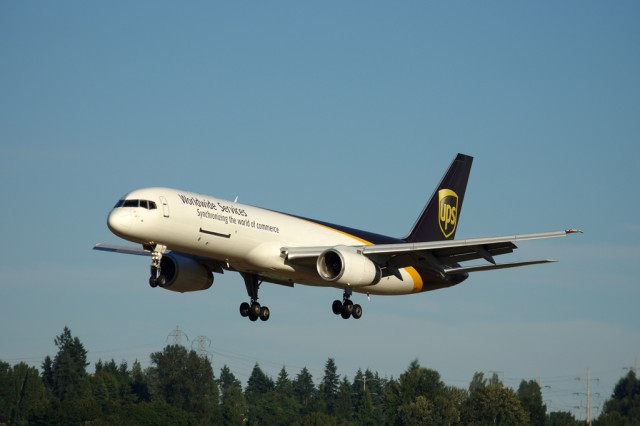
The first airline to receive the freighter version of the 757 was UPS – Photo: Mal Muir | AirlineReporter
The 757 came in three varieties: the 757-200, the -200 Freighter, and the stretched 757-300 (or as I like to call it, the plane that looks like it goes on forever). The 757-200, which was the most prolifically-ordered at almost 900 versions of the type, was the aircraft that you could see at just about any major US airport. It looks are distinctive, with the high ground clearance and the fact that there was a boarding door just forward of the wings.
Door 2L was the most commonly used to get passengers onboard, so it was always nice to turn left into first class, something that is rare on a narrow-body aircraft (or even some wide-bodies). The stretched -300 was the longest narrow-body aircraft ever produced at 178 ft, which is roughly the same size as an olympic swimming pool (plus a meter or two for the diving blocks). Although it could seat roughly an extra 50 people, it had a tradeoff – less range.
The 757 was not only popular with the airlines, but it was also a hit with freight companies all over the world. It could have been produced as a dedicated freighter, a combi, or as a military transport. The first 757 ever built is now a test aircraft for military research programs and sits idle at Boeing Field. The US Air Force picked up a number of 757s (designated the C-32) and uses them as VIP transports (often flying as Air Force Two or ferrying around the Secretary of State).
The Royal New Zealand Air Force (RNZAF) even uses a 757 Combi as its VIP & Troop Transport. Ever want to see how capable a 757 is — just watch the RNZAF demo their aircraft.
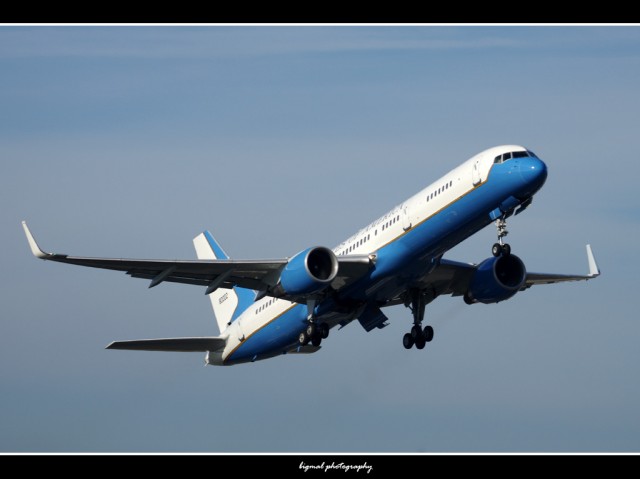
The US Air Force took delivery of a number of Boeing 757s and designated them the C-32. They are used for VIP Transport.
But the 757 will not be destined for the skies forever. The airlines have started to retire their fleets in favor of more fuel-efficient aircraft. The Boeing 737-900ER has been one of these and so has the Airbus A321. But these aircraft may have range or passenger capacity, but not both.
British Airways was the first European airline to take delivery of the 757; they had the last of their aircraft operate a commercial flight in November 2010, and slowly but surely the US airlines have phased them out too — Delta even put one in their museum!
BONUS: Will 757s Stop Flying Soon? Airbus Launches New A321neoLR
The 757 did get some reprieve in 2009, when they got permission to retrofit blended winglets to the aircraft, giving them an extra 5% fuel efficiency and around 200 additional miles in distance. Although not much, it was enough for airlines to keep them around for a bit longer.
There are airlines, like Icelandair, that are mostly successful due to the 757. “The Boeing 757, with its range and reliability, has been a perfect fit for our network and will remain an integral part of Icelandair,” Michael Raucheisen, Marketing & Communications for Icelandair explained to AirlineReporter. But he also knows that they cannot fly forever and they are looking at other options. “In 2018, we look forward to adding new 737 -800 and 737-900 MAX’s, with many of the same qualities of the 757. These new aircraft will be a great complement our already exclusively Boeing fleet and help to expand our growing network.”
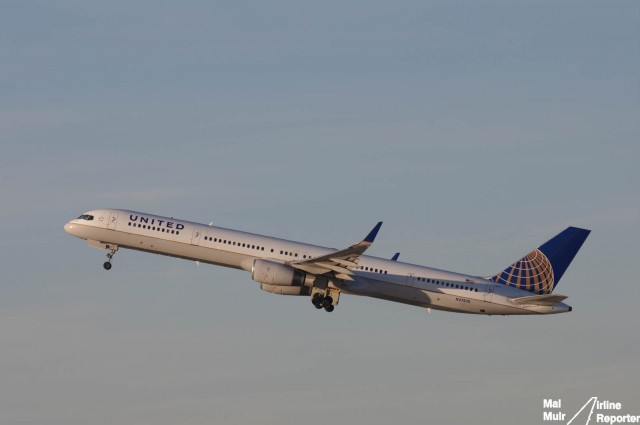
A United 757-300, the aircraft that never ends. I will forever miss this aircraft when they finally leave the skies
Despite the nostalgia, the death knell seems to have sounded as newer, far more fuel-efficient aircraft come knocking at the door. The 737-9MAX and the A321NeoLR lead the charge to replace the 757. I, for one, will be sorry the day they disappear. Gone will be the sight of that tall aircraft, which a lowered flight deck, that has become so iconic. I will miss the 757, but until they are finally gone, I will still enjoy flying on them.
| Malcolm Muir – Managing Correspondent Mal is an Australian AvGeek now living and working in Seattle. With a passion for aircraft photography, traveling and the fun that combining the two can bring. Insights into the aviation world with a bit of a perspective thanks to working in the travel industry. @BigMalX | BigMal's World | Photos | Email |
The post The Boeing 757 – A Beloved Airliner appeared first on AirlineReporter.com.
